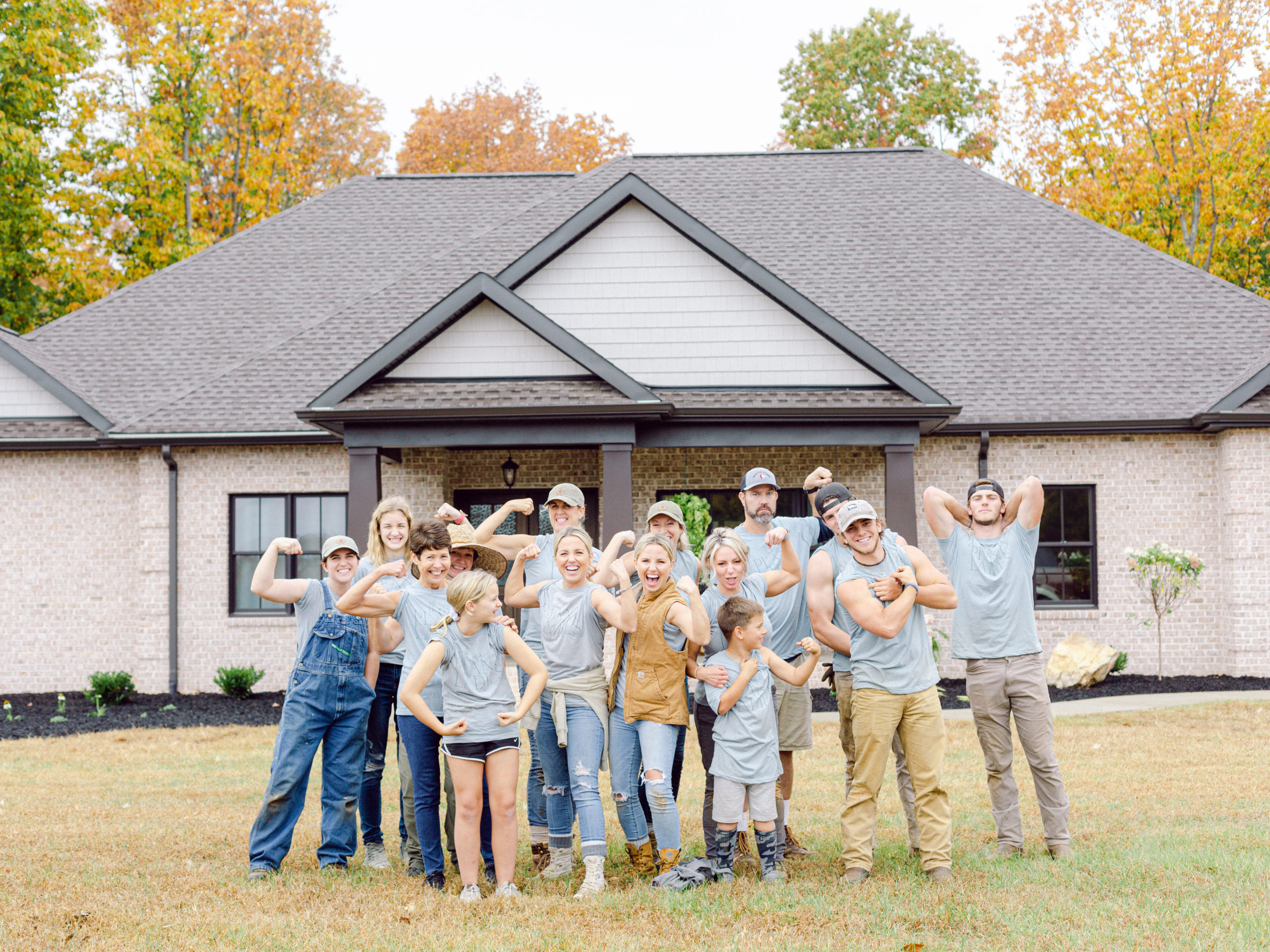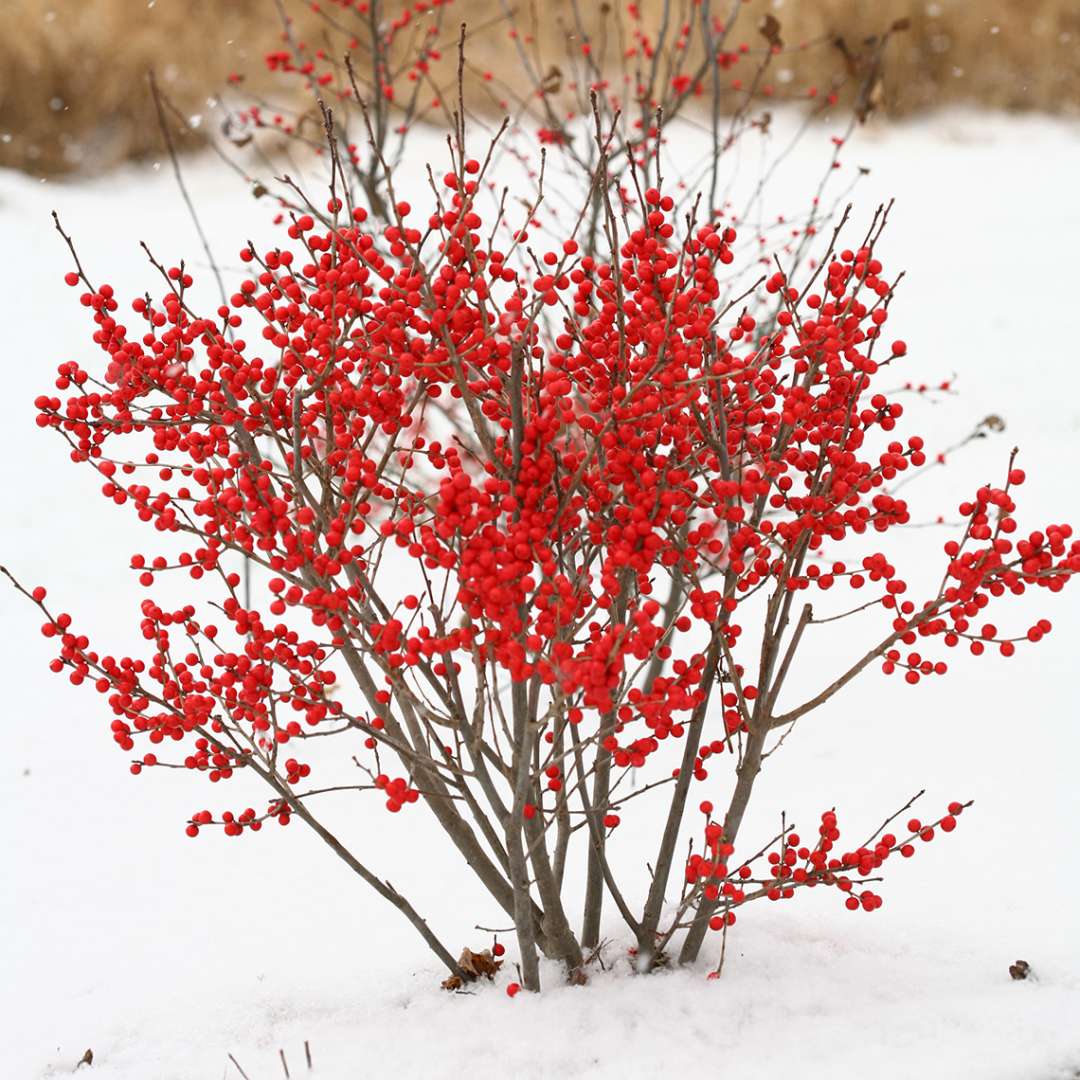These plants are used way too much and are often planted in landscape settings that really aren’t well suited for them.
We’re based in North Carolina and have seen a lot of landscapes around the Southeastern region of the US. And from looking at those landscapes, it’s really clear that the horticulture industry needs to start getting more creative! Friends… we need to get serious; it’s time to have a landscaping intervention.
It’s time to expose our list of the plants we see everywhere you look. These are the primary culprits that you will see in everyone’s yard, wherever they will grow. Yes, these are tough plants that are really a challenge to kill but we know that we can do better! These plants are used way too much and are often planted in landscape settings that really aren’t well suited for them.
Let’s take a deep dive into each plant on the list
1. Nandina

This plant is a hard “no-go” for us. They sure are tough and have a unique appearance but that just doesn’t make up for the rest of its sins. This plant is classified by the United States Department of Agriculture (USDA) as an invasive, noxious weed and the berries are actually poisonous to songbirds. Nandinas have a tendency to spread through colonization, or suckering, to create thicket-like masses where they are planted. They are also spread through seed dispersal by birds and mammals which is how they end up in our natural areas. When nandinas begin to colonize a woodland area, they outcompete plants that are needed by wildlife and our native habitats are lost to these invasive species. If you can’t remove your nandinas from your property entirely, prune the berry-filled branches off to protect birds and prevent the spread of seeds.
2. Liriope

Another hard “no-go” plant for us for many of the same reasons as nandina. First, it’s just a boring plant. It’s so overused and outdated, we just don’t want to see it anymore. There are two main species of liriope that are used, Liriope muscari and Liriope spicata. L. spicata has been listed by the National Park Service as a threat to Mid-Atlantic and Southeastern forests and both species have been listed as species of concern by organizations in Georgia and South Carolina that identify and classify invasive species. If liriope needs to be used, we recommend only using it in landscape areas that are not connected to natural areas such as landscape beds surrounded by pavement. This prevents the liriope from spreading into unmanaged, natural areas and displaces native plants.
3. Boxwoods + Hollies

Now we are getting into some plants that we believe have a purpose in the landscape but shouldn’t be used nearly as much as they are. We’ve lumped boxwoods and hollies (specifically youpon hollies) together because they’re often used in the same landscape applications. These plants are usually placed along the foundation of homes and hedge-trimmed into balls or cubes. There are places where these shaped topiaries are appropriate to the aesthetic style and design of the landscape but it shouldn’t always be to “go to” for foundation plantings.
4. Loropetalums

This plant could also be lumped in with the same category as the plants above because it’s so often used in the wrong landscape setting. It has many redeeming qualities – it’s fast-growing, some varieties have deep shades of purple leaves, they are evergreen, and they produce vibrant flowers. However, it grows far too fast to keep its shape and requires a lot of maintenance to keep a tidy look. It gets hairy-looking very quickly in the summer and becomes dense and twiggy with repetitive pruning. This plant is hardly ever left to its own devices but there are some gorgeous treeform species that grow with beautiful architecture, similar to an unpruned crape myrtle. It can look wonderful in the landscape but we are tired of seeing loropetalum balls!
5. Azaleas

This might be a controversial listing as azaleas really are the darling of the southern landscape. In the spring, when the blooms are bursting, we’re almost convinced to remove these from our list. However, when it gets too late summer and they are leggy and have been beaten up by azalea lace bugs, we are reminded why they are on our list. It truly, again, has to do with overusing this plant in the wrong landscape setting. Azaleas are gorgeous plants for the backside of your landscape or areas where you are not spending time up close and personal with the plants. They are best when the striking blooms can be enjoyed from a distance in the spring and their flaws are far in the distance later in the summer and fall. They like a little bit of shade as well and are too often, again, planted against the home, in full sun and pruned into shapes. This frequent pruning and harsh heat causes them to show even more signs of stress. Leave them in the shady corner of the yard to grow naturally and provide you tons of blooms each spring.
It wouldn’t be fair, though, to tell you which plants we want you to plant a little less of without telling you what plants we would recommend as replacements so we’ve created this replacement recommendation guide for your next plant shopping trip. When you’re tempted to reach for those same ol’ same ol’ plants, pull out this list and make the swap!
Instead of nandina… try oregon grape!
Mahonia has a very similar structure to the nandina which makes it a wonderful replacement plant. It grows upright, between 3-6 feet tall, depending on which variety you choose. The nandina is often chosen for its red berries and the mahonia come through with some good sized clusters of blue berries in the late summer that song birds love! Use mahonia in an area that is not frequented by foot traffic because it has some very prickly leaves. You definitely won’t want to be bumping up against it or trying to pull your baseball out of the branches.
Scientific name: Mahonia aquifolium

Instead of liriope… try carex!
There are sooo many species of carex to choose from and so many varieties of each species! With this many choices, you’re bound to find something that suits your taste. Many species of carex are native to many regions of North America so you earn even more bonus point if you choose a native variety as your replacement. These grasses perform well in part sun with average soil moisture.
Scientific name: carex spp.

Instead of boxwoods + hollies… try a dwarf Japanese cedar!
The texture on a dwarf Japanese cedar is to die for! There is a softness the way the needles lay and the arching shape of the branches that we love so much! This plant makes an excellent boxwood replacement because it will retain a small, spherical shape with little to no pruning. It does not grow those “wild hairs” that emerge straight out of the plant and need trimming multiple times each year. These shrubs are low maintenance and tolerate a wide variety of growing conditions, reaching between 2-5’ tall, depending on the variety selected.
Scientific name: Cryptomeria japonica ‘Globosa Nana’ or ‘Dragon Prince’

Instead of loropetalums… try a merlot sweetspire!
For most climates where the sweetspire is hardy, it will stay semi-evergreen, retaining a good portion of its leaves through the winter. It is definitely not as densely evergreen as the loropetalum and does not come with the choice of deep, deep purple foliage like the loropetalum, but we love the long, blooming racemes that fill this plant in the summer before the red and orange fall leaf color sets in to stay through the winter. This shrub stays a much more manageable height than most loropetalums and, while still a moderately fast grower, doesn’t quite compare to the aggressive overgrowth of the loropetalum.
Scientific name: Itea virginica ‘Merlot’

Instead of azaleas… try a hydrangea!
Okay, okay hydrangeas are probably on someone else’s “overused” list because they are not hard to find in the southeastern landscape but we just love them soooo much! They might not be evergreen like azaleas but we aren’t crazy about the sparse, often ratty look that azaleas can have through the winter anyways. When choosing hydrangeas, be sure to choose the right hydrangea for your space. Otherwise, you’ll end up with an overgrown mess. If you have a little bit of shade and a little more room, choose Hydrangea quercifolia or Hydrangea arborescens for the added bonus of a native plant. If you have a small space, choose a dwarf variety like Little Lime, Bobo, or Bombshell.
Scientific name: Hydrangea macrophylla, hydrangea paniculata

We’re huge advocates for increasing the biodiversity of our landscapes and ecosystems around us! What we choose to plant in our yard can go a long way in increasing that biodiversity. Don’t be afraid to mix it up – choose a plant you haven’t grown before – choose something that might not be the exact same plants as your neighbor! Not only will it make your landscape stand out a bit above the rest, but will also bring variety to our world! Diversity is a beautiful thing!





